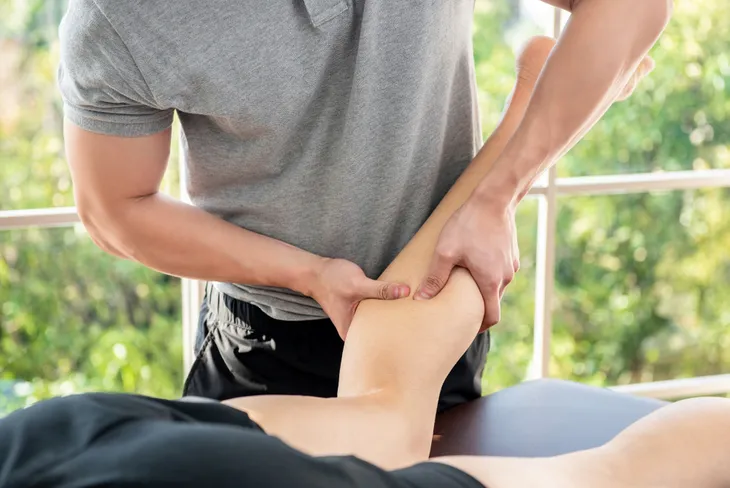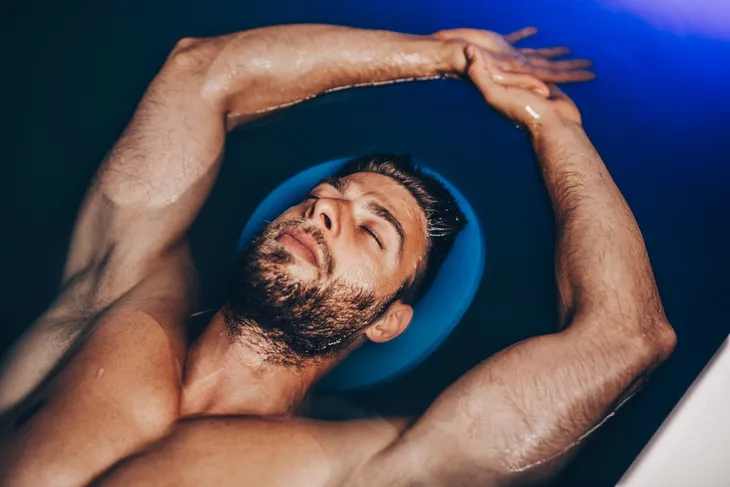For anyone new to the gym or a new workout routine, a question that is frequently asked is, “should you workout when sore?” This is an important question because when you’re first starting on your fitness journey or when you start a new exercise routine, your motivation is at an all-time high and you don’t want to slow down for anything — including muscle soreness!
Often people want to know whether they should push through the soreness and continue training, or if they would be better off taking a rest day instead. So, as a physiotherapist, I’m going to provide my best advice for this situation so that you can go ahead and modify your workouts when feeling sore. Let’s dive into it!
What Feeling Sore Means
Whenever someone tells me that they are feeling quite sore after an exercise session I tell them that this is a great sign that you are putting in hard work to improve your body.
When you wake up feeling sore, this is your body telling you that you’ve worked out hard and it might be time to focus on recovery for the next day before returning to hitting the weights again. With that being said, I am not suggesting taking a day off, I’m challenging you to add in either an active recovery day or a bodywork day into the mix which will help you to stay on track. Let’s explore what these mean next!
Active Recovery Days
Don’t be fooled by the term “active recovery”. This does not stand for taking a day off. All it means is that you are acknowledging that your body is feeling sore and that it’s time to help your body recover so that you can hit the gym harder the following day.
An active recovery day involves you exercising at a decreased intensity. Essentially, you are choosing an activity that gets the body moving. This will help you loosen up tight and sore muscles, get your blood flowing to these regions, and help speed up your recovery.
Active Recovery Ideas
There are many exercises you can do on an active recovery day. My favorite active recovery sessions are:
- Yoga: A 30-minute session of gentle yoga flow to help stretch out and improve your mobility.
- Swimming: A 1-hour session of swimming laps in the pool at a pace equal to or less than 50-percent of your maximal output. Slow it down, focus on form, and allow your body to recover.
- Walking: Especially after an intense lower body exercise session, get out for a nice 1-hour walk to get the legs moving.
- Stretching session: Pick the body parts that are the sorest and focus your stretches around these problem areas. Sit deep into the stretches and focus on your breathing.
I suggest adding at least one active recovery session to your workout regimen every week. Remember, this isn’t a day off. Implementing more active recovery days into your schedule will allow you to get back to training hard in the gym.
Bodywork
Another option instead of taking a complete day off from working out is adding in a bodywork day now and then. Bodywork is an alternative to medicine and includes any therapeutic or personal development technique that aims to reduce pain.
If you’re exercising hard in the gym, you’re naturally going to experience stiffness and soreness in different parts of your body. By adding in a bodywork day you’re reducing the likelihood of injury and you’re helping your body to recover and grow stronger.
Examples of Bodywork
Here are some of my favorite bodywork examples that you can try:
- Massage therapy: Head to your favorite masseuse for a 1-hour massage to work out the problem areas in your body. You’ll recover faster and be ready to train again the following day
- Sensory deprivation tanks (float tanks): Going for a float allows your body to soak up magnesium salt which helps for muscle soreness and cramps. This feels incredible after a hard week of training in the gym.
- Cupping/dry needling: Head to your local physiotherapist to get cupping or dry needling done. Pick a few problem areas for the physiotherapist to work on.
- Cryotherapy: Cryotherapy machines drop the temperature to -202 degrees Fahrenheit (-130 degrees Celsius) helping to reduce inflammation and soreness experienced after hard training sessions.
Should You Workout When Sore?
I hope this answers your question of “should I workout when sore?” Try adding a few of the examples above into your weekly routine.
Regardless of the style of workouts you do, if you are feeling sore, it’s your body telling you that you’re breaking down muscle tissue and you need to recover so that your body can bounce back stronger and faster.
Active recovery days and bodywork sessions make for a nice break from the gym allowing you to focus on your body’s recovery instead of pushing through your soreness and continuing to exercise. Give it a try!









